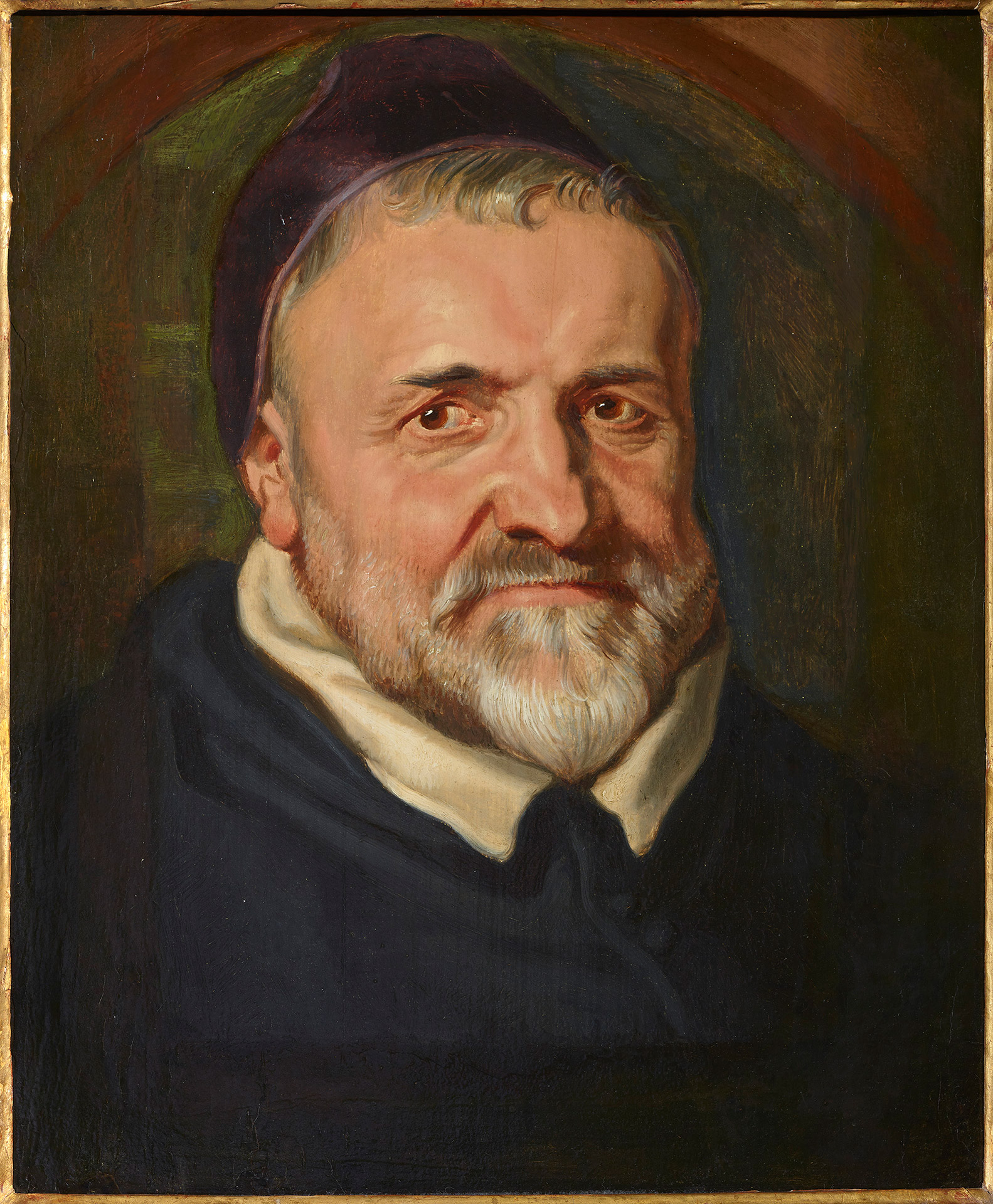
Peter Paul Rubens (Siegen, Germany, 1577 – Antwerp, Belgium, 1640)
Michel Ophovius
Circa 1625
WORK INFORMATION
Oil on panel, 44 x 36 cm
Though of Flemish extraction, Peter Paul Rubens was born at Siegen, near Cologne, during his Protestant father's exile. Consequently, from a very young age he was acutely aware of the problems derived from the religious wars that wreaked economic and social havoc on the Netherlands in the late 16th century. After his father's death, Rubens's mother reverted to Catholicism and returned to Antwerp, the family's hometown. The superb training received during his childhood in the service of various noble houses gave the young Rubens an extremely erudite and courtly education; this was augmented by a superior knowledge of art acquired during his stints in the workshops of Flemish masters such as Tobias Verhaecht, Adam van Noort and Otto van Veen, who gave him a taste for landscape, the human figure and classical antiquity, respectively. In 1601, while still a young, newly-fledged master, he travelled to Italy, where he studied the great artists of the Renaissance and added to his extensive knowledge of ancient culture.
With this intellectual baggage, he returned to his homeland in 1609 and entered the service of Archduke Albert and his wife Isabella who, as governors of the Spanish Netherlands, instigated sweeping political, religious and aesthetic reforms in their domain. In the second decade of the century, Rubens put his brushes at the service of a necessary artistic and religious renewal in the city of Antwerp, whose images had been destroyed in several waves of iconoclastic fervour over the previous decades. From that moment on, his enormous, impressive altarpiece paintings embellished the churches of Antwerp with a grandiose, energetic style that quickly brought him fame, for his scenes, at once beautiful and overwhelming, represented the most eloquent expression of Catholic dogma.
Beyond the profound devotion that emanated from his religious images, Rubens's insightful, sensual vision of mythology, his exaltation of nature, his bold depictions of the human figure and his ability to transmit ideas through elegant allegories made his work much admired and sought-after by the majority of Europe's most powerful patrons, bringing him an international fame unrivalled by any other artist of his day. Part of the reason for this great success was his innate ability to move in courtly circles—at one point he was even entrusted with a diplomatic mission to Philip IV of Spain—and, above all, his highly organised working method. The creation of a large, efficient workshop, with a perfectly organised team of disciples, assistants and collaborators working at full capacity in his famous Antwerp residence, was instrumental in forging a reputation that made clients across Europe vie for the privilege of enlisting his services and possessing his works.
A learned and elegant man, tireless scholar and collector, Rubens was fluent in several languages and used them to correspond with many leading intellectuals of his day, who enjoyed his conversation and friendship. One of those erudite connections was the Dominican Michel van Ophoven (1571–1637), also called Ophovius, in keeping with the custom of Latinising surnames. From his lofty position as bishop of Leuven, inquisitor and adviser to the Archduchess Isabella, Ophovius employed the same eloquence in his theological and political writings that Rubens conveyed in his canvases. This portrait subtly yet effectively captures Ophovius's intelligence and astuteness, while also revealing the painter's close relationship with the theologian. Both men played a fundamental role in the cultural revival that swept across the Spanish Netherlands in the early years of the 17th century. [José Juan Pérez Preciado]

